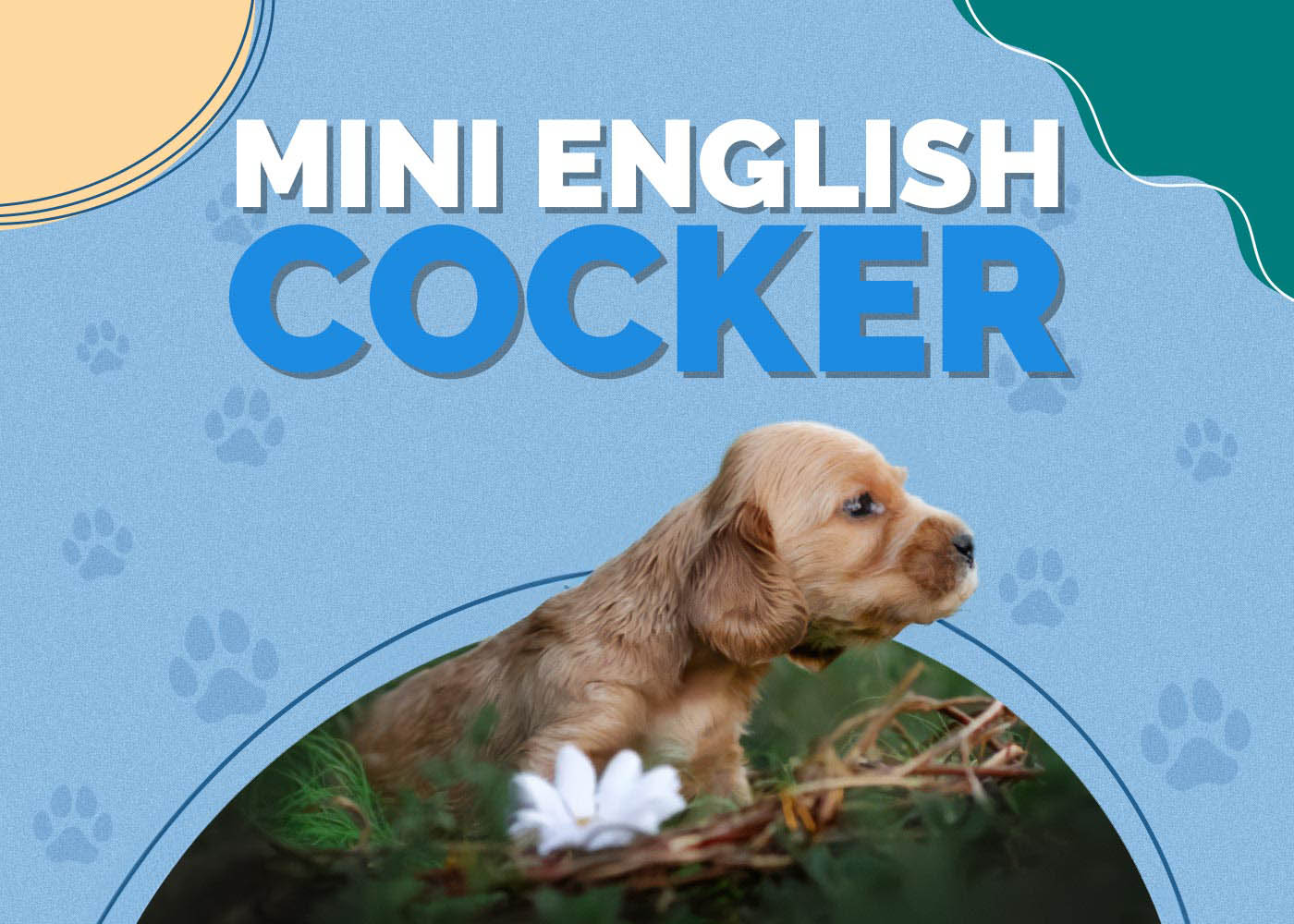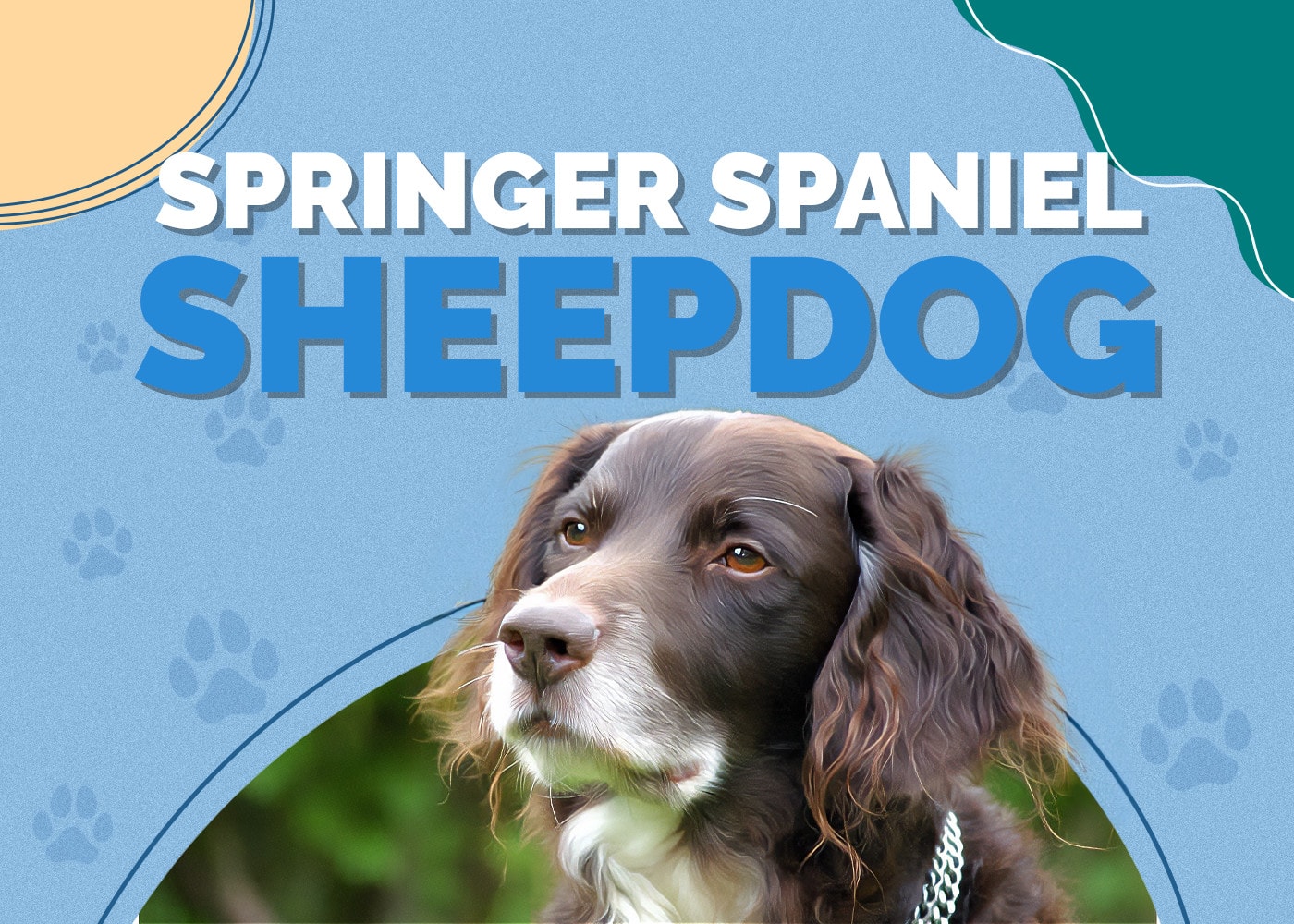Pit Heeler (American Pitbull Terrier & Blue Heeler Mix): Pictures, Info & Facts

Updated on
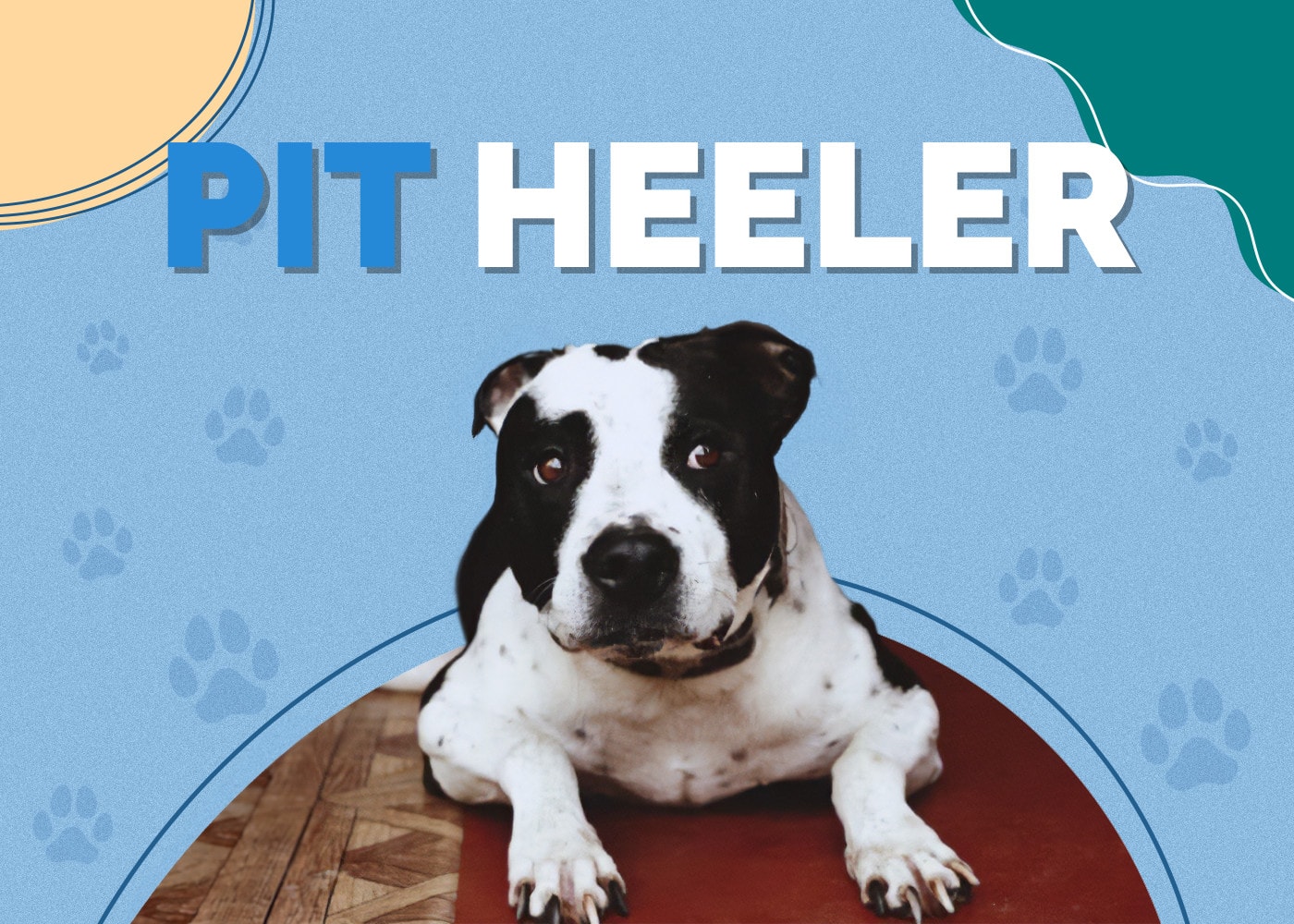
| Height: | 17–24 inches |
| Weight: | 35–60 pounds |
| Lifespan: | 12–15 years |
| Colors: | White, grey, or brown base with blue mottled, striped, or spotted finish |
| Suitable for: | Active families, those looking for a low-shedding dog |
| Temperament: | Loyal, Loving, Hardworking, Headstrong, Always Looking to Please |
The Pit Heeler is a relatively new breed, crossing the American Pitbull with the Australian Cattle Dog, more often referred to as the Blue Heeler. The resulting crossbreed is also known as the Bull Heeler, Bull Pit Heeler, or Queensland Pit and takes herding and loyalty from both of its parent breeds.
It enjoys moderate cold and can suffer in hot climates because of its thick coat. With consistent training, the Pit Heeler can be a loving family pet that constantly looks for ways to impress and please its owner.
They are muscular and strong with powerful jaws, require daily exercise, and need mental stimulation to prevent destructive behavior. They have modest maintenance requirements and shed twice a year—in cold climates, shedding continues for longer, but their relatively short hair means that excessive shedding is not cited as a major problem with the breed.
Pit Heeler Puppies
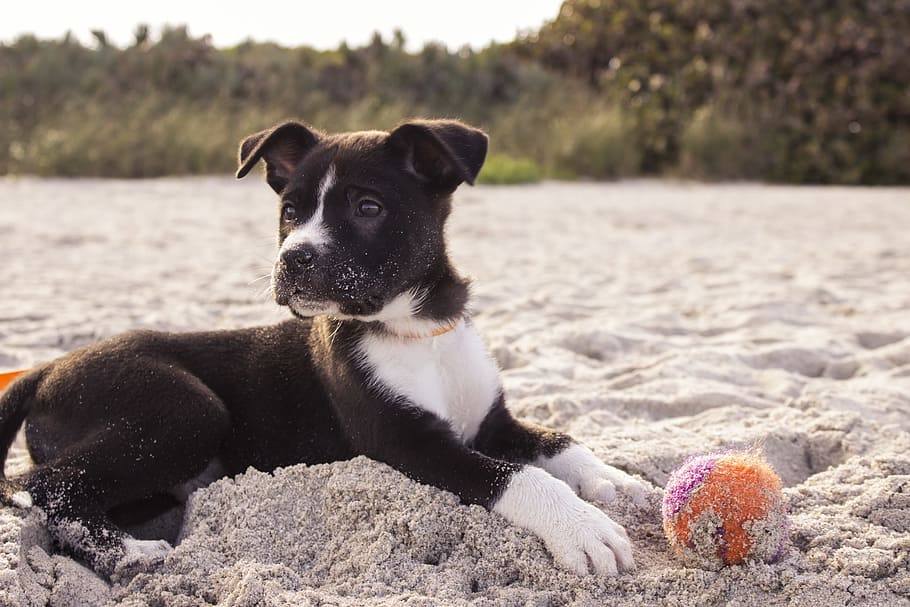
The Pit Heeler breed is still quite new, but the popularity of the parent breeds means that they might increase in popularity. When you’re looking for a Pit Heeler, take your time to research reputable dog breeders. Avoid breeders that offer Pit Heelers at low prices since this can be a sign of a puppy mill where the dogs aren’t well cared for. You can also ask your local dog rescue if they have Pitbull mixes that resemble the Pit Heeler.
Pit Heelers tend to be hard-working and energetic dogs. They’re also loving dogs and will create strong bonds with their human companions. Be ready to dedicate lots of time to exercise and training with your dog to keep up with their high energy levels.
3 Little-Known Facts About the Pit Heeler
1. Heelers Are Cattle Dogs That Nip at The Heels of Lazy Cattle.
Heelers are Australian cattle dogs and got their name because they tend to nip at the heels of the cattle they are managing. They help ensure that the rancher’s cattle don’t roam off, and if they haven’t had proper training, they can become quite robust with the cattle under their charge. However, they also love to please, so training is highly recommended. Heelers were introduced from Australia to America by ranchers looking for these desirable traits, and a Pit Heeler can be trained as a working dog.
2. Pit Heelers Are Very Energetic.
Pit Heelers don’t just look muscly and strong, they are. They also have very high energy levels and you should be prepared to put in a serious shift playing every evening, especially if you don’t have a large garden where they can naturally burn off energy. Both parent breeds are used to herding cattle over vast expanses of space, so they can easily cope with walking miles and miles.
3. Pit Heelers Are Very Sociable.
It is always a good idea to socialize a puppy. It prevents undesirable reactions when introduced to people and animals in the future and it can also assist in training. In the case of Pit Heelers, it can be highly beneficial to have two of these dogs, so they have company and are well-socialized by the time they mature.

Temperament & Intelligence of the Pit Heeler 🧠
Pit Heelers are, first and foremost, working dogs. They are strong and have boundless energy: capable of running miles without missing a beat. Even inside, they need regular physical and mental stimulation and they will want to get involved in anything that looks like a game. Ensure that they’re well stocked with appealing toys and that they get firm training, though, and they can make excellent family pets.
You will be able to train a typical Pit Heeler for most working tasks, as long as you make learning fun and engaging, and are consistent with your training efforts.
Pit Heelers can, by their nature, be biters. Ranchers use them to nip at the heels of large animals and have strong jawbones. You must ensure that nipping and biting are discouraged as soon as possible. Although a puppy might not bite aggressively, you should still train them to prevent it from becoming a problem later.
Like Pit Bulls, Heelers are extremely loyal and loving, though. They enjoy spending time with their family and, as long as they were trained at an early age, they should pose no threat to your family.
Are These Dogs Good for Families? 🏡
Pit Heelers really can make excellent family pets. They have a good lifespan, are energetic and fun, and they can be loyal and loving. But, to display these traits, they need training and socializing from a young age. They need to be taught that nipping is unacceptable, which will require consistent and firm training. This doesn’t mean aggressive training: no dog responds well to aggressive training, but positive affirmation and negative reinforcement will go a long way to ensuring that your puppy integrates well with the rest of its family.
Does This Breed Get Along with Other Pets? 🐶 😽
Training and socialization are also important if you have other pets in the house. By socializing your puppy when it is young, through puppy training classes, and by regularly meeting other people and animals, you should have no problems integrating this breed into a pack with other dogs, cats, or other animals.
If you are adopting or taking on an older Pit Heeler, it will depend on the individual dog and the type and consistency of training it has had. Most adult dogs of this breed enjoy spending time with other dogs, but this isn’t something that can be guaranteed. Try to determine how they react around other dogs before committing.
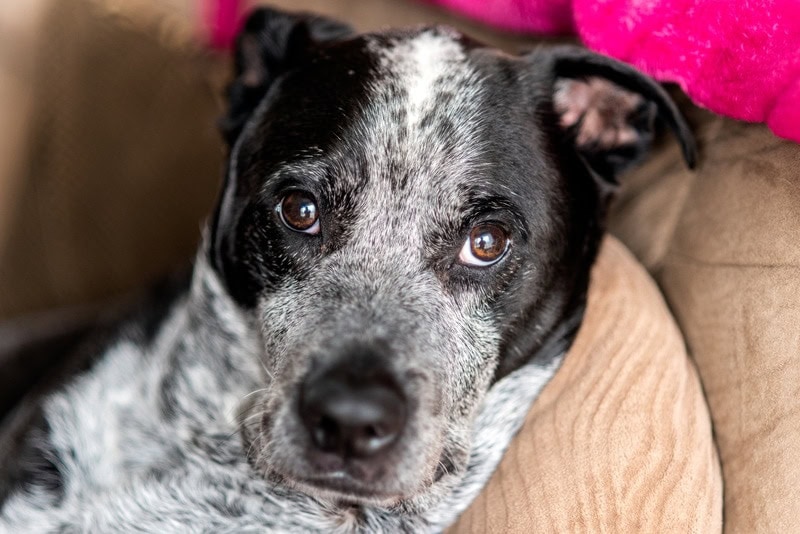
Things to Know When Owning a Pit Heeler:
Pit Heelers can make great family pets, but there are several factors to consider before adopting or buying one.
Food & Diet Requirements 🦴
All dogs require good quality protein in their diet, typically animal protein. It helps build healthy muscles, and this is especially important in a breed like the Pit Heeler because it is a muscular dog.
Puppies have higher protein demands than adult dogs with young Pit Heelers needing at least 22% protein. Adult dogs still require a minimum of 18% protein in their diet. Fat requirements are 8% and 5% for puppies and adult dogs, respectively. You can consider foods that are high in chondroitin and glucosamine because these aid in maintaining good musculoskeletal strength and health.
Puppies will require three meals a day. As your dog gets older, you might reduce this to two meals a day. If your adult Heeler is an active or working dog, stick to three meals to ensure that they get a good balance of required protein, fat, and vitamins and minerals over the full course of the day.
- Check out our review of the best high-protein dog foods here!
Exercise 🐕
The Pit Heeler is a strong and very energetic dog. Originally bred for herding cattle over vast expanses of land, they can roam and run for miles, without tiring. While your pet Pit Heeler does not need quite the same level of exercise as they would when ranching, you need to be prepared to put in the effort. You should be spending an hour a day providing physical exercise for your Heeler.
Pit Heelers are also very intelligent. As well as offering physical exercise, you will need to provide mental stimulation. Play games, provide plenty of interactive toys, and don’t be afraid to use this time to train your Heeler. Their loyalty and willingness to please their owner mean that you can train Heelers for a wide range of tasks using positive reinforcement and a lot of consistency.
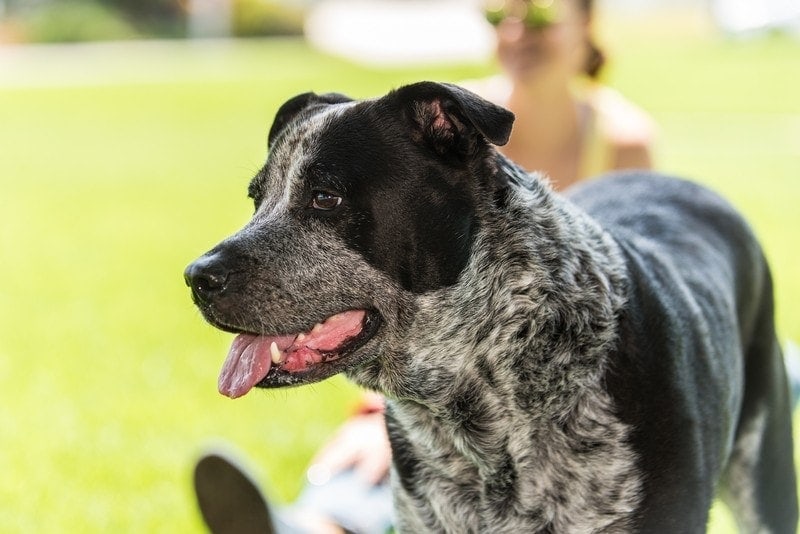
Training 🦮
Pit Heelers should be trained from a young age. They are strong, energetic, and can be playful. If you don’t set boundaries and teach good behavior, they can quickly become bored, leading to antisocial activities. They also have very strong jaws and can make short work of sofas and other furniture. Train them young and use positive reinforcement training techniques.
Positive reinforcement means praising and rewarding your dog for performing a desired task. This type of training is especially effective for dogs like Pit Heelers that dote on their owners and love to make them happy.
As well as teaching the basics like sit and stay, you will need to discourage nipping. Nipping is a natural trait for this breed of dog, named for its tendency to nip at the heels of cattle. Reward and give treats for positive behavior and find actions that can replace the nipping. Do this early and ensure that children and others are aware of the dog’s tendency to nip.
Early socialization is just as important. Your Heeler can become shy and wary of strangers, and their herding nature can come to the fore around other dogs and animals. Consider puppy classes or, better yet for a dog with this level of stamina, take your puppy herding or agility classes. If you enjoy running, scrambling, or hiking, try to find a way to get your Pit Heeler involved because they will appreciate the work.
- Related Read: Best Dog Harness for Hiking: Reviews & Top Picks
Grooming ✂️
The Pit Heeler will need to be brushed weekly and should be given baths when they start to smell. The dog’s natural inclination to roam, kick dirt, and play on the ground will dictate how often this should be done.
You will need to clip your dog’s nails every two or three months, although this varies according to how much exercise they get and especially if they walk on concrete. Hard and abrasive surfaces like concrete naturally wear nails down.
You should follow standard guidelines for teeth and ears. Teeth need to be cleaned two or three times a week, minimum, but ideally every day. Ears should be wiped out every week to try and prevent mites and ear infections.
Health and Conditions ❤️
Pit Heelers come from very hardy stock. Both parent breeds are considered healthy with a few common complaints. The activity level of the dog means that they are prone to hip dysplasia. The Blue Heeler breed is also more likely to suffer from a loss of vision caused by progressive retinal atrophy. With good care and maintenance, your pet Pit Heeler should live between 12 and 15 years.
- None
- Hip dysplasia
- Congenital Hereditary Sensorineural Deafness (CHSD)
- Progressive retinal atrophy
Male vs Female Pit Heeler
There’s very little difference between the male and females of this breed. Both sexes can grow to roughly the same size and usually show similar character traits.
Final Thoughts
The Pit Heeler is an energetic and fun cross between the American Pitbull and the Blue Heeler. Descended from herding dogs and cattle dogs, this breed has boundless energy and requires steady and consistent training, as well as socialization from a young age.
If trained well, the Heeler makes a loving and loyal member of the family. It has a few known health problems and a life expectancy of up to 15 years. Although baths might become a common occurrence thanks to the dog’s tendency to run through water and mud during its travails, the Pit Heeler is relatively easy to care for and maintain.
You should be prepared to feed high-protein and high-fat meals to accommodate the breed’s love of exercise. Owners will also need to train their Heelers not to nip and consider joining a dog agility or herding class.
Featured Image Credit: Angela Cavina, Pexels





